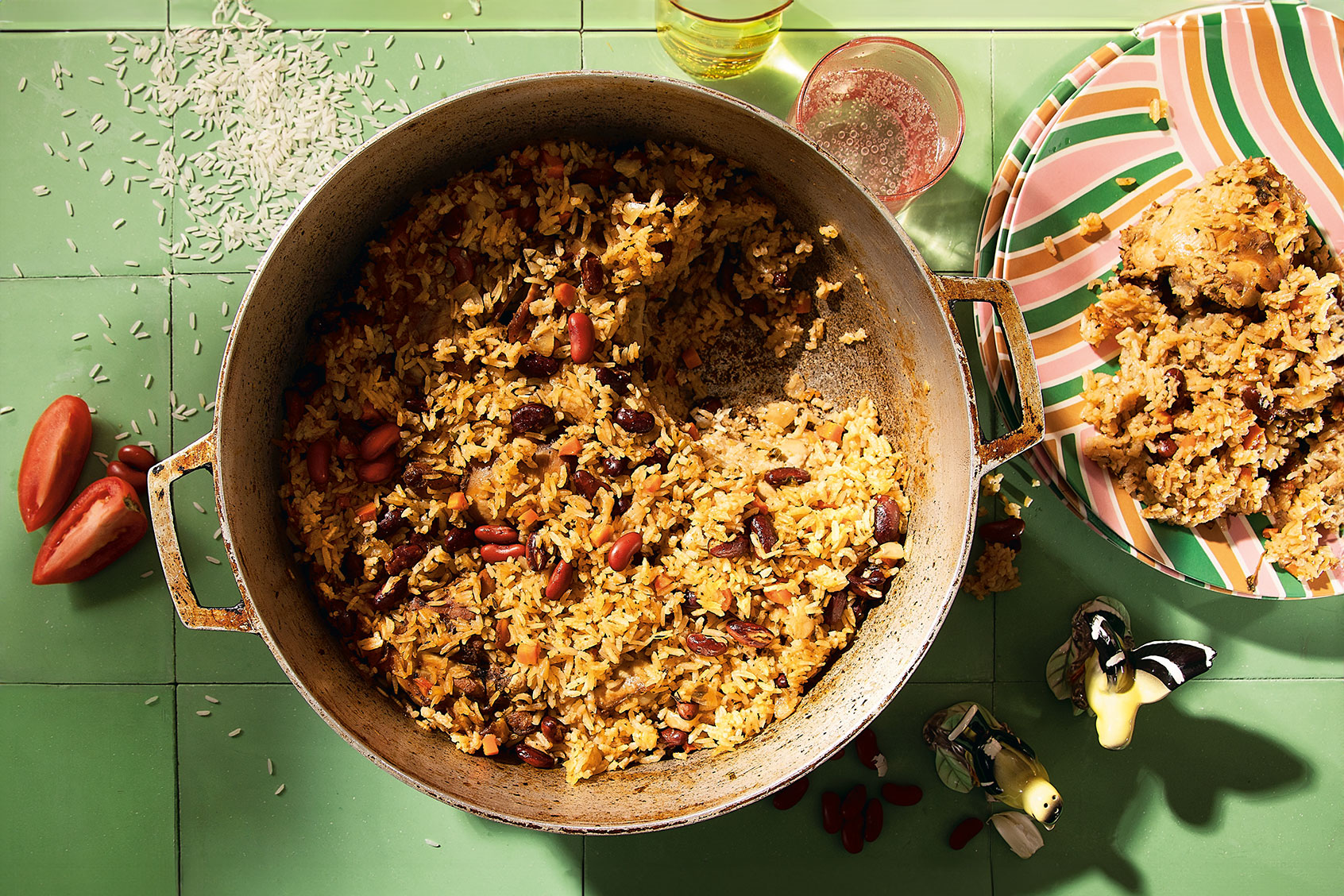Recipe developer and food writer Lesley Enston's new cookbook "Belly Full: Exploring Caribbean Cuisine Though 11 Fundamental Ingredients and Over 100 Recipes" delve deep into the staple ingredients which make up the rich tapestry that is Caribbean food. From Trinidad and Tobago to Cuba, from Antigua to Jamaica, from Barbados to Martinique, Enston details the classic cuisine of each country, both disparate and uniting in its familiar base flavors.
Enston specifically references eleven ingredients — beans, cassava, coconut and rice among them — which make up the backbone of Caribbean cuisine at large, including unique recipes and varying uses for each staple ingredient based in the history and culture of each country.
As Enston told me, to her, is holistic: "[it means] both a full belly and a full heart. It means satisfied and satiated and like all is right with the world."
Salon Food had the opportunity to speak with Enston about her favorite Caribbean dishes, the aforementioned eleven staple ingredients, a formative moment when she embraced food and cooking, her most used ingredients how her experience with the Haiti Culture Exchange influenced her cooking (and this book!), plus much more.
The following interview has been lightly edited for clarity and length.
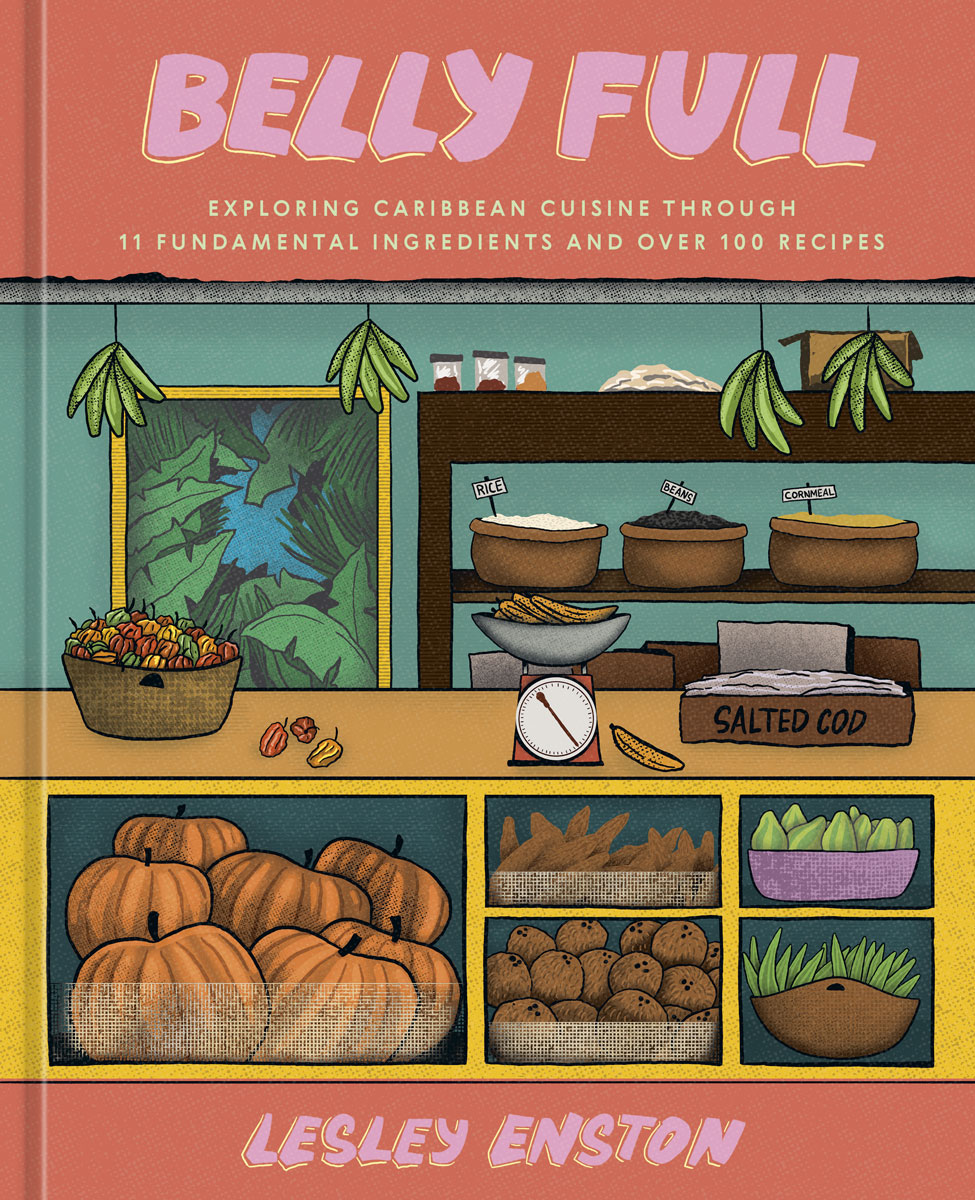 Belly Full: Exploring Caribbean Cuisine Through 11 Fundamental Ingredients and Over 100 Recipes by Lesley Enston (Cover art by Nicholas Huggins/Ten Speed Press)
Belly Full: Exploring Caribbean Cuisine Through 11 Fundamental Ingredients and Over 100 Recipes by Lesley Enston (Cover art by Nicholas Huggins/Ten Speed Press)
Hello there, I love the cover art! Who was the illustrator? How was the art direction ideated?
Thank you, I love it too! The artist is a Trinidad and Tobago based Illustrator, Nicholas Huggins, who was recommended to me by branding consulting Best Dressed Plate. I knew from the beginning I wanted an illustrated cover, and rather than featuring one cooked dish, I wanted it to represent the 11 ingredients in the book. I wanted anyone from any culture that uses any of these ingredients be able to see themselves in this cover. Markets in the Caribbean have been one of my favorite places since I was a kid in Trinidad. I love the colors, the smells and the bustle. I wanted a cover that represented that which is so part of our culture.
Do you have a favorite dish in the book?
That’s hard! I love so many of the dishes. One that has a special place in my heart is the Buljol (stewed salted cod) which is something my mom made so often growing up. It’s something she could make with her eyes closed and which I can too now. And it was something that I might whine about having again but secretly I’d always love eating it, which is sort of how it is with my daughter today.
What does "Belly Full" mean to you?
To me this phrase means both a full belly and a full heart. It means satisfied and satiated and like all is right with the world.
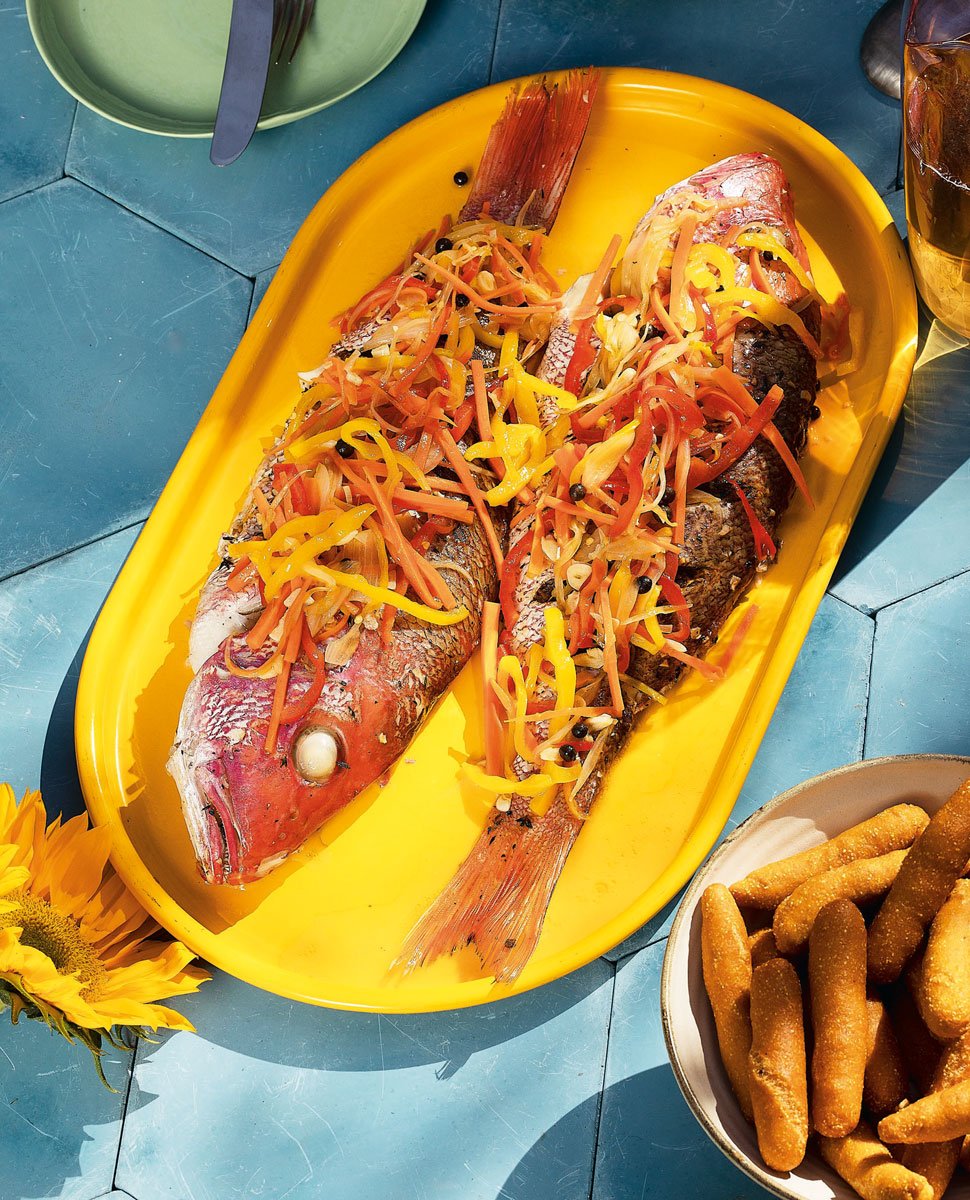 Snapper Escovitch-ish (Photo by Marc Baptiste)
Snapper Escovitch-ish (Photo by Marc Baptiste)
Could you give a breakdown of the eleven staple ingredients you use to provide a foundation for Caribbean cooking throughout the book?
The 11 ingredients in the book — beans, calabaza, cassava, chayote, coconut, cornmeal, okra, plantains, rice, salted cod and scotch bonnet peppers — are all inherently Caribbean ingredients.
Some, like beans, calabaza, cassava, cornmeal and scotch bonnet peppers, are indigenous to the islands and were being processed and consumed by the people living there when the colonizers arrived. Others, such as coconut, plantains and salted cod, came from far away places, brought by the Europeans. Others, like okra and rice, were staples in Africa before the enslaved were brought to the islands.
All these ingredients met and melded together to create the dishes you see in this book. I always say Caribbean cuisine is the world’s first fusion food and you can see it with these ingredients. While we use different seasonings with them, and sometimes different cooking methods, they show up across the region and create a sense of familiarity and connection from island to island.
I visited Trinidad back in college and was absolutely smitten with it. What are some of your favorite Trindadian dishes and comfort food go-tos?
It’s such a magical place! There are so many dishes I love that didn’t make it in the book. One of my favorite things is shark and bake, which is a fried fillet of shark served in a piece of fry bread with a variety of condiments like chandon beni sauce and pepper sauce. I have made this myself and it was good but nothing beats having this on the beach freshly fried.
Doubles are also one of my all time top favorite things to eat, which are stewed chick peas served with two pieces of another kind of fried bread called bara. This is probably one of my favorite foods in this world and I just discovered that the person who invented doubles is from my mother’s hometown!
There's such a wide breadth in the book, touching on the all of the islands and how the history of colonialism and the Atlantic Slave Trade impacted the cuisine, the food and the people — and how that's still reverberating and felt today. You touch on so many different islands in the book, from Haiti and Jamaica to Puerto Rico and Cuba — what do you feel is the most unifying aspect amongst those disparate island nations? Either culinary or otherwise
Ultimately, I think what unifies us is our history. We all had indigenous populations that were decimated by Europeans, and while those nations were different, they all ultimately did the same things. They then all brought enslaved people to do free labor. When you combine these things with the foods that were there, the foods brought by enslaved Africans or Europeans combined, you have a commonality that allows you to understand each other.
There are many aspects of other island’s culture that are drastically different than Trinidad’s, for instance, but there are other things, because of this history, that are so similar and that can often be found on the plate.
Want more great food writing and recipes? Subscribe to Salon Food's newsletter, The Bite.
I read in a press release that most of the recipes are gluten-free and plant based — is that typical of most Caribbean cuisines?
I would say many rather than most. I think there are many gluten free and plant based dishes in the Caribbean, but by no means do most people eat this way. There are a lot of gluten-free recipes in part because Europeans couldn’t get wheat to grow there, so they had to come up with alternatives. However today flour is a very common ingredient and there are so many variations of bread and dumplings.
Meat is certainly common, especially chicken and pork. I grew up not eating that much meat in part because my mother grew up too poor to eat much meat, and because she grew up Seventh Day Adventist in which they often follow a plant based diet. Also, the islands are small and don’t have a lot of space for large animals. So while meat is available, it’s not nearly as ubiquitous in every meal the way it is in North America.
What would you say you'd love for people to take from this cookbook?
I hope people learn about real Caribbean cooking, and how flavorful and accessible it is. I also hope readers learn more about this region and take away an understanding of how history has affected our cuisine. I think a lot of people think of the Caribbean as a sunny, happy place with fruity cocktails and beautiful beaches. And it is those things, but there is so, so much more.
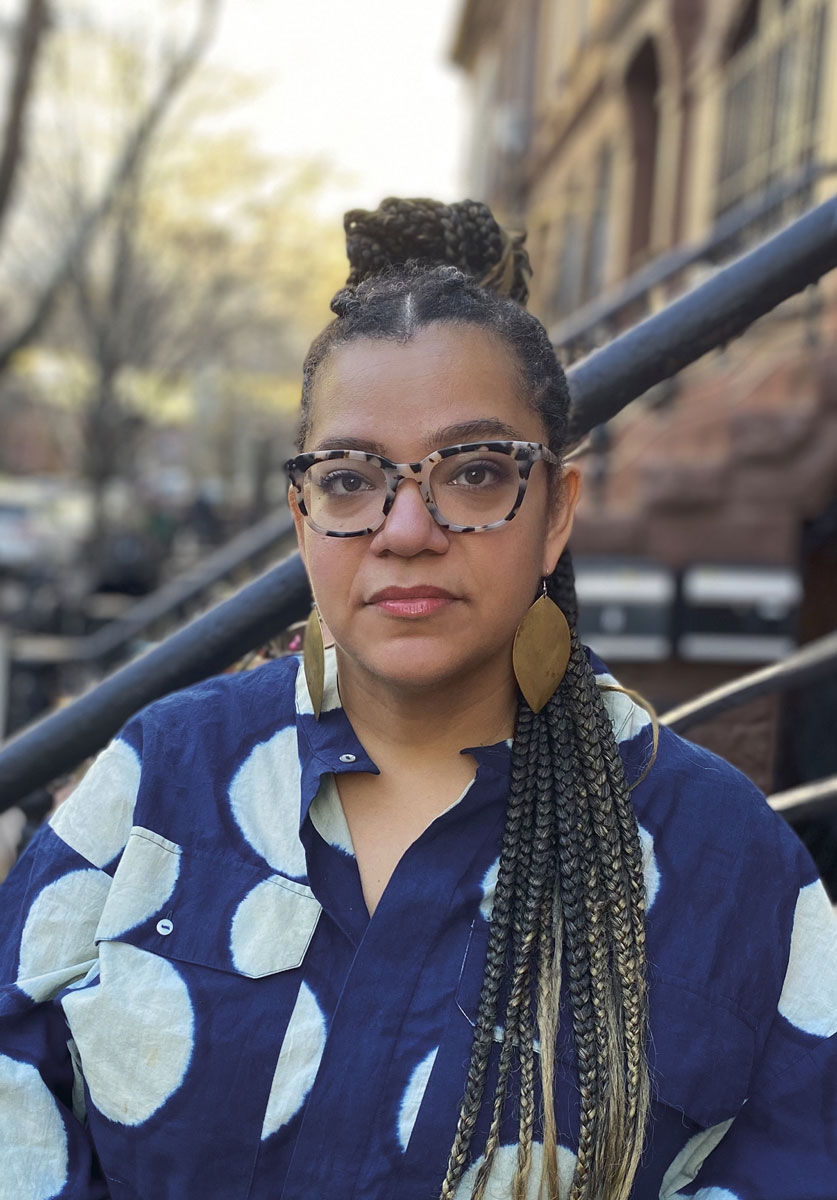 Lesley Enston (Photo by Atibon Nazaire)
Lesley Enston (Photo by Atibon Nazaire)
How does this book represent your culinary ethos and outlook?
Aside from the fact that I am of Trinidadian descent and have always gravitated towards food from the islands, what I love about our cuisine is its flexibility and adaptability. While people will always argue about the “right” way to make certain dishes, the reality is our mothers and grandmothers and aunties would make a dish with what they had and there’s nothing you can do which is “wrong” as long as you're following the heart of the dish.
What would you say is a good recipe from the book that’d be great as a start for a beginner cook?
I think any of the stewed beans recipes are a great place to start. Beans cooked in this fashion are very forgiving and precise technique is less important than intention and patience. It’s hard to mess up beans, and though they do take time, the rewards are great!
Conversely, is there a more complicated dish in the book that you think would make for a wonderful “project” on a long weekend for a more advanced cook?
The Plantain Tarte Tantin is definitely a project, but I think it’s a fun one. Also the different variations of stuffed chayote (such as Chayotes Rellenos or Gratin au Christophene. They do require several steps but are very cathartic. Lastly, Pepperpot, though not complicated, takes a long time and cannot be rushed, so it’s great for a cold weekend with lots of indoor time.
Do you have a number one favorite ingredient to work with?
I think that would have to be garlic. All my friends know that my average measurement is something like a “boat load.” I feel strongly like you can never have too much.
What stands out for you as a formative moment that got you into cooking or food at large?
It’s difficult to think of one moment. While I always loved food, when I lived in London I suddenly found myself unable to easily access a lot of the foods I was used to, and even then they often lacked the flavor that I was used to. So I found myself making a lot of things from scratch, or foods that I would normally only order from restaurants. I think it was then that I realized how much I enjoyed cooking.
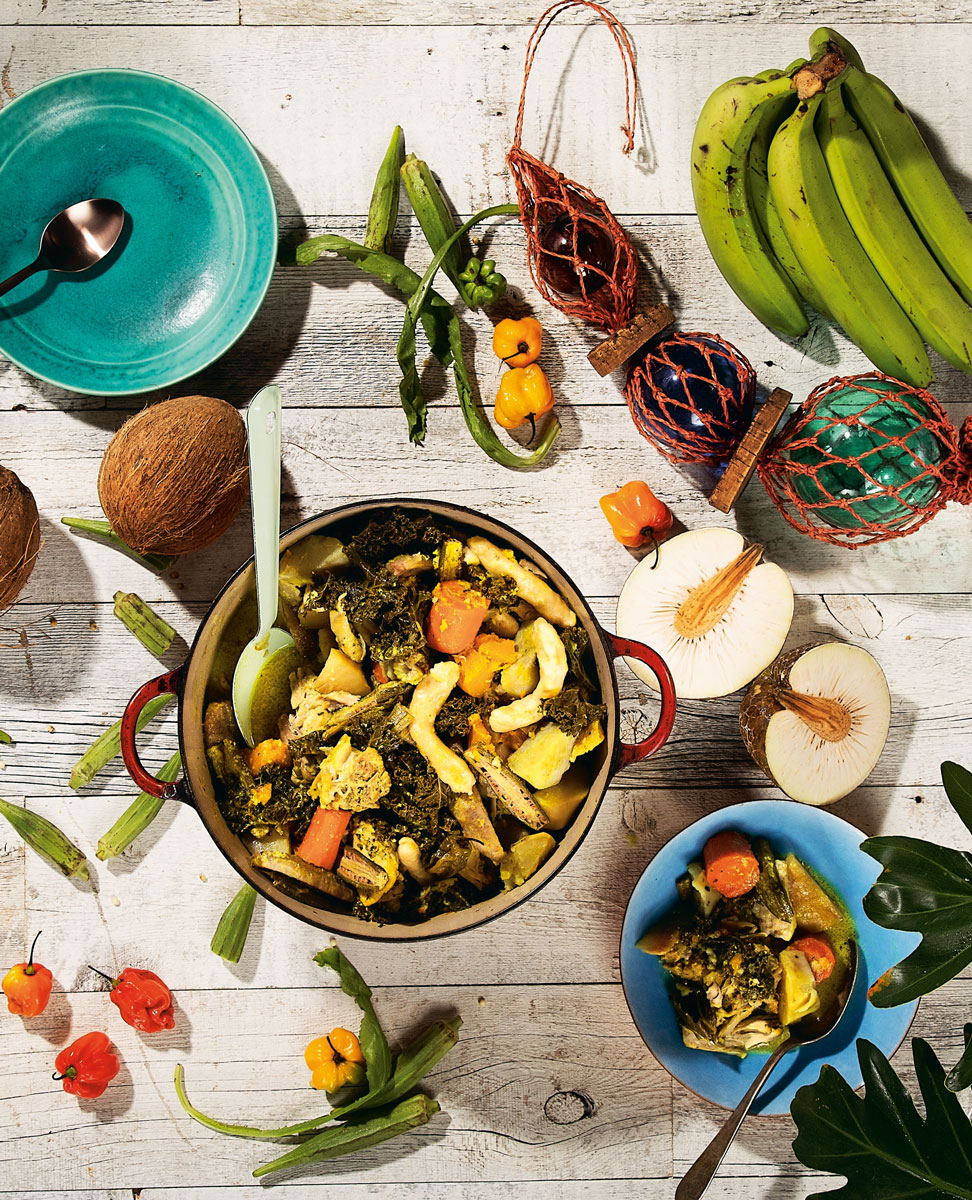 Oil Down (Photo by Marc Baptiste)
Oil Down (Photo by Marc Baptiste)
What would you say are your three most used ingredients?
See garlic above. Are we talking about outside of standard things like olive oil or salt? Possibly citrus, I hardly ever cook without lemon, lime or a sour orange finding its way in there. Also thyme. Of all the herbs (and I use them all a lot!) I probably use that the most.
What is your favorite cooking memory?
It’s hard to pinpoint one, but early memories in the kitchen with my mother stay with me. With her I learned that food equals love, and her ease in the kitchen is something that impressed on my memory. My mother could get worked up about a lot of things, but cooking or baking, regardless of how much she was doing at once, never phased her. I always loved being in the kitchen with her while she cooked, or just encountering it. Coming home from an outing in the winter to steamy windows and the smells of her cooking in the kitchen was always the best.
We need your help to stay independent
What’s your biggest tip for cutting down on food waste?
Get creative! If something that’s lurking in your fridge sounds like it might taste good in a dish, try it. Don’t let anything languish in there. If nothing else, cook the heck out of it in a stock.
How do you practice sustainability in your cooking?
As per the above, I try to cut down on food waste, by cooking everything I have in whatever way possible, by trying to loosely plan out meals so I know where I’m going, and stocking up on staples I know I’ll always use and having a hearty spice/seasoning collection to take any ingredient in different directions.
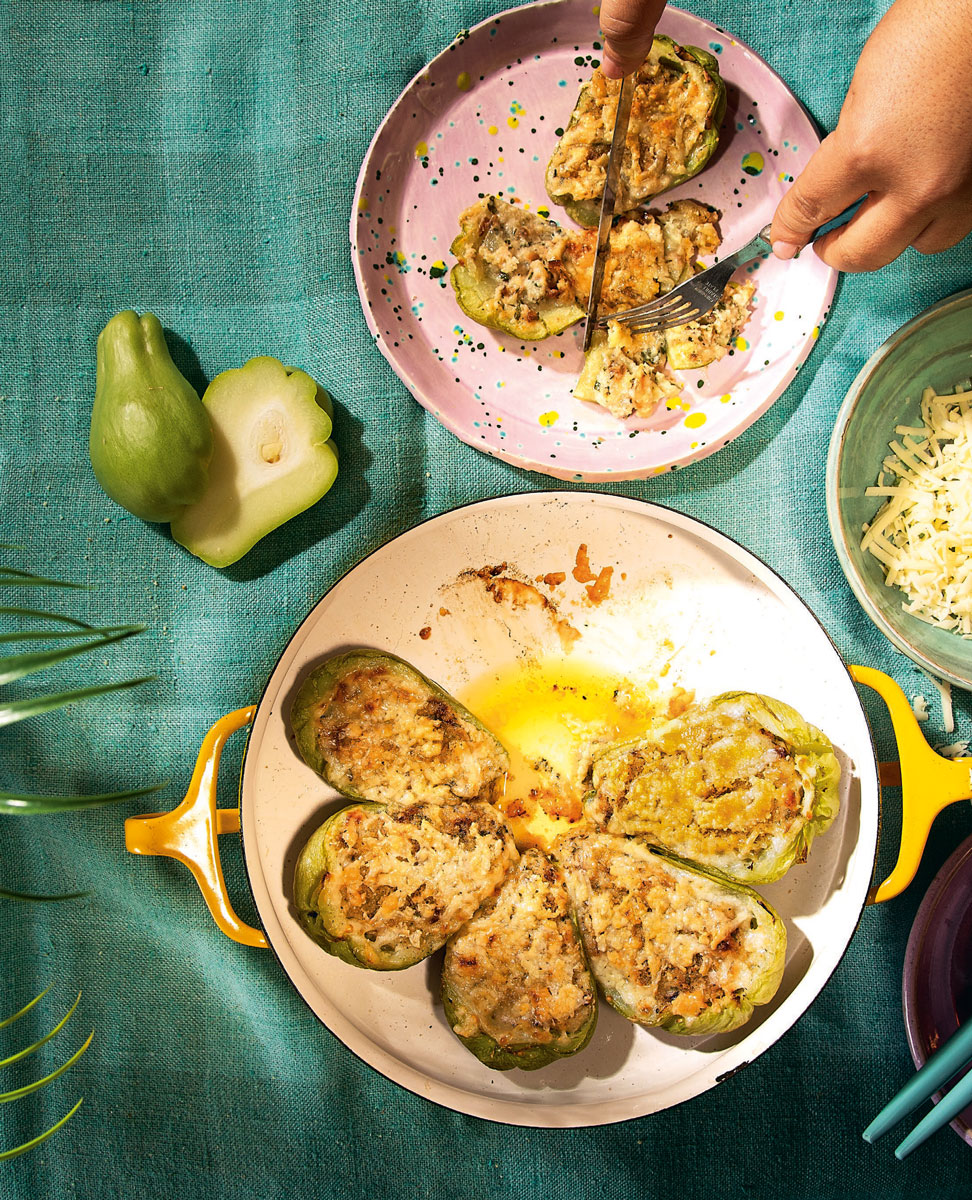 Gratin au Christophine (Photo by Marc Baptiste)
Gratin au Christophine (Photo by Marc Baptiste)
Can you tell me a bit about your background in food and recipe development?
I have always loved cooking for my loved ones and hosting dinner parties. Though I worked for a long time in fashion, both editorial and PR, my very dear, long time friend Lukas Volger had always encouraged me to get into food. I recipe tested most of his books, because I was one of the only people he could trust to make the recipe as written! During the pandemic, when America had its moment of racial reckoning, opportunities arose to do recipe development for Bon Appetit. I pitched some recipes, and it snowballed from there. The idea for this book had been forming since maybe 2015, and it was during this time period I finally realized what I wanted it to be.
I read that you worked at the Haiti Cultural Exchange. How did that influence some of the work and research you did for the book?
I had been introduced to the Haitian community through my daughter’s Haitian father, and he also introduced me to this wonderful organization highlighting Haitian arts and culture. Through my work there I got to further understand both Haitian art and culture, and through it Caribbean culture on a whole, through a more nuanced lens, and gained a deeper appreciation of why it’s important to tell our stories, and how few voices are being amplified to do it. I was also introduced to the brilliant Chef Cybille St. Aude, who did the Soup Joumou recipe for the book, via HCX.
Do you feel like your Caribbean roots and your time living in London, Toronto and now Brooklyn has also influenced your cooking and your culinary ethos/approach?
100% My mother didn’t always cook Trinidadian food, but she always used a Trinidadian approach. Which is season, more seasoning, and season again. It’s also to not be fussy about what you have to make a dish. Even if she was missing an ingredient, or threw in something unusual, her food was always recognizable and distinctive because she cooked it with the same style. I think Caribbean cooks are some of the most inventive out there, in part because our food comes from so many sources. I think above anything food has to taste good, and that is something our food always does.
Read more
about this topic
